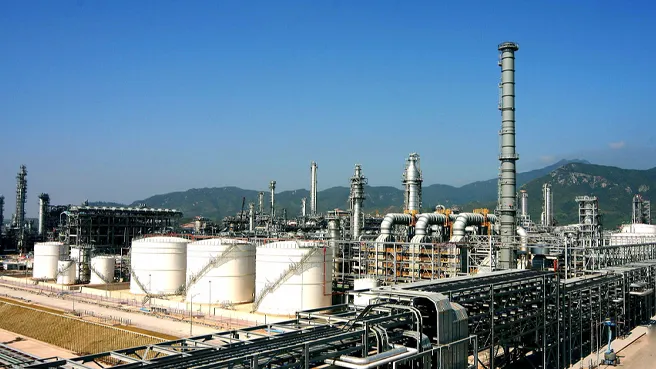
cyanide for mining
The Role of Cyanide in Mining A Double-Edged Sword
Cyanide has long been a significant player in the mining industry, particularly for gold extraction. This compound, particularly in its sodium cyanide form, is a potent chemical that facilitates the process of separating precious metals from their ores. Its use, however, comes with a host of environmental and safety concerns that have sparked a vigorous debate among stakeholders in the industry, environmentalists, and local communities.
The Process of Cyanidation
Cyanidation, or the cyanide process, is the predominant method employed for gold recovery from low-grade ores and involves several steps. Initially, ores are crushed and ground to increase the surface area for chemical reactions. The fine ore is then mixed with a dilute cyanide solution, allowing the cyanide to react with the gold and form a soluble complex. This solution can then be processed to extract the gold through various techniques such as carbon adsorption, electrowinning, or precipitation.
The appeal of cyanide in mining lies in its cost-effectiveness and efficiency. Gold can be extracted at remarkably higher rates than with traditional methods, making it a staple in the mining operations of many companies. Moreover, advancements in technology have improved cyanide processing, allowing for better recovery rates and reduced environmental impact at certain operations.
Environmental Concerns
Despite its efficacy, the use of cyanide in mining is fraught with environmental risks. A primary concern is the potential for cyanide leaks or spills, which can have catastrophic consequences on local ecosystems. If cyanide-contaminated water seeps into nearby rivers or groundwater supplies, it poses lethal risks to aquatic life and can lead to severe health issues for communities relying on these water sources.
Moreover, the storage of cyanide presents significant safety hazards. Tailings, the waste material left over after precious metals have been extracted, often contain residual cyanide. Poorly managed tailings ponds can fail, leading to disastrous spills, as seen in infamous incidents such as the Baia Mare spill in Romania in 2000, which resulted in widespread ecological damage.
cyanide for mining

Stricter Regulations and Alternatives
As awareness of the dangers associated with cyanide use has grown, many countries have introduced stricter regulations governing its use in mining. Some regions have banned cyanide altogether, pushing companies to seek alternative methods of gold extraction. Innovations such as bioleaching, which employs microorganisms to extract metals, and the use of thiosulfate as an alternative solvent are gaining traction. These methods, while still in development, offer promise for safer and more sustainable mining practices.
Balancing Act
The challenge facing the mining industry is to balance economic viability with environmental responsibility. While cyanide remains a highly effective means of gold extraction, the environmental risks cannot be overlooked. The industry must adopt best practices to handle cyanide safely, such as developing robust emergency response strategies and investing in the research of alternative methods.
Community engagement is also vital. Mining companies need to be transparent about their practices and involve local populations in decision-making processes to address their concerns and ensure that the benefits of mining projects outweigh the potential risks.
Conclusion
Cyanide plays a critical role in modern mining, acting as a key chemical in the extraction of gold. However, the associated environmental impacts and safety risks necessitate careful management and regulation. As the industry evolves, a continued commitment to innovation and sustainability is essential to ensure that mining can coexist harmoniously with environmental conservation and community welfare. The future of mining will depend on finding effective, safe, and sustainable methods to harness the Earth’s resources while protecting the planet for generations to come.
-
Comprehensive Guide to Acetic Acid as Preservative: Benefits, Uses & Future TrendsNewsNov.24,2025
-
What Is a Food Additive? Global Insights, Applications & Future TrendsNewsNov.24,2025
-
968 Sweetener: The Modern Solution for Health-Conscious SweeteningNewsNov.23,2025
-
Discover the Benefits and Uses of 965 Sweetener (Erythritol) | Tenger ChemicalNewsNov.23,2025
-
961 Sweetener - A Next-Gen Sugar Alternative for Health and IndustryNewsNov.23,2025
-
Understanding 960 Sweetener: The Modern Sugar Alternative for Health and IndustryNewsNov.22,2025
-
Everything You Need to Know About 955 950 Sweeteners – Benefits, Uses, and TrendsNewsNov.22,2025
Hebei Tenger Chemical Technology Co., Ltd. focuses on the chemical industry and is committed to the export service of chemical raw materials.
-

view more DiethanolisopropanolamineIn the ever-growing field of chemical solutions, diethanolisopropanolamine (DEIPA) stands out as a versatile and important compound. Due to its unique chemical structure and properties, DEIPA is of interest to various industries including construction, personal care, and agriculture. -

view more TriisopropanolamineTriisopropanolamine (TIPA) alkanol amine substance, is a kind of alcohol amine compound with amino and alcohol hydroxyl, and because of its molecules contains both amino and hydroxyl. -

view more Tetramethyl Thiuram DisulfideTetramethyl thiuram disulfide, also known as TMTD, is a white to light-yellow powder with a distinct sulfur-like odor. It is soluble in organic solvents such as benzene, acetone, and ethyl acetate, making it highly versatile for use in different formulations. TMTD is known for its excellent vulcanization acceleration properties, which makes it a key ingredient in the production of rubber products. Additionally, it acts as an effective fungicide and bactericide, making it valuable in agricultural applications. Its high purity and stability ensure consistent performance, making it a preferred choice for manufacturers across various industries.





